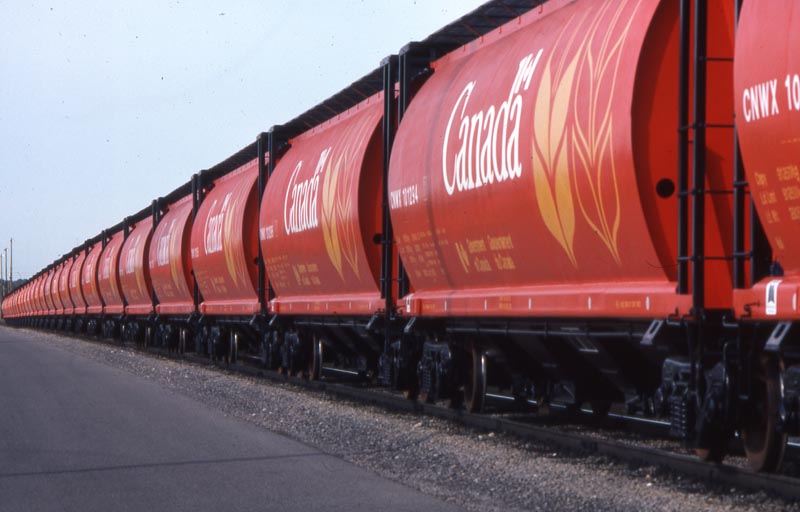|
The Sample Car  My
son Paul Churcher inspecting a sample
car
at National Steel Car Company, Hamilton on 5 August 1982.
One of my more pleasant duties while working in grain
transportation for the Federal Government was to attend the sample car
inspections arranged by the railcar manufacturers.
In the 1970s and 1980s the government bought
a large number of cylindrical covered hopper cars for grain transport
from the
three Canadian manufacturers at When the first car of an order was completed the manufacturer would invite the railway mechanical people to the plant to inspect the car. Inspectors crawled all over the car with tape measures to ensure that it met their plans and specifications precisely – right down to the last nut and bolt. This inspection was very thorough indeed and would take several people the best part of a day. When it was pronounced satisfactory, and after any modifications required, the sample car would be retained at the plant until the order had been completed. The idea was to make all subsequent cars of the order identical to the sample car. If any manufacturing question came up, it could be resolved by referring to the sample car.The first sample car inspection I attended I
was asked if I
was happy with the car. I said no
because, while the entire car was painted an eye catching red with
black trim,
the ABDW valve was painted blue and I wanted the ABDW valve painted red. I was told they couldn’t do this as this was
the way they came from the air brake manufacturer and if it was
repainted it
would invalidate the warranty. It seems
you could have any colour of ABDW valve as long as it was blue!
The government received a number of suggestions about these cars over the years. The grain elevator agents wanted a hand brake on each end because it was a long way to walk from the A end to the B end. This couldn’t be done because it would take twice as long for train crews to ensure all hand brakes were off before a train departed. One of the more curious requests was to put a ladder into the hopper itself so that people could climb out after having fallen in. The answer was to ensure people didn’t fall in and I believe a metal grill was installed across the open hatchways. The unloading gates on the bottom of the hoppers also caused problems such as wrenched backs at the unloading terminals until we standardized on a gate that could be opened with an air wrench. I have a couple of finished Intermountain Government of Canada HO scale grain hopper cars and recently acquired two of their kits. While the instructions are generally easy to follow, there were a few times when I wasn’t quite sure what had to be done. I put the model aside for an hour or so and then I realized that I had my own sample car. I brought out one of the finished models and it became clear to me how to proceed. However, when I examined my sample car I found that the ABDW valve had been painted red so I had to get out my paint brush and paint it the proper colour. I had always wondered about the sample car and why it had to be retained in the car plant until the end of the order. Now I know. Ottawa Valley Associated Railroaders - OVAR, The Interchange, April 2007. |
